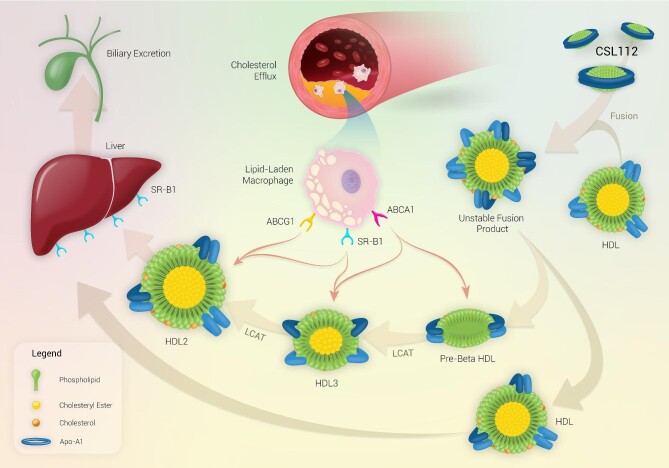Figure 1.
Mechanism of action of CSL112 and reverse cholesterol transport. Upon infusion, CSL112 fuses with native HDL and causes a rapid dose-dependent increase in lipid-poor pre-β HDL concentrations, which increases ABCA1 driven cholesterol efflux. CSL112 also causes an increase in the rate of LCAT-driven esterification of free cholesterol to form cholesteryl ester. The hydrophobic cholesteryl esters move to the interior of the HDL particle causing the pre-β HDL particles to form larger more mature spherical HDL3 and HDL2 particles which transport cholesterol to the liver for excretion in bile. Abbreviations: ABCA1/G1, ATP-binding cassette transporter A1/G1; HDL, high-density lipoprotein; HL, hepatic lipase; LCAT, lecithin-cholesterol acyltransferase; SR-B1, scavenger receptor class B type 1; and TG, triglycerides.

